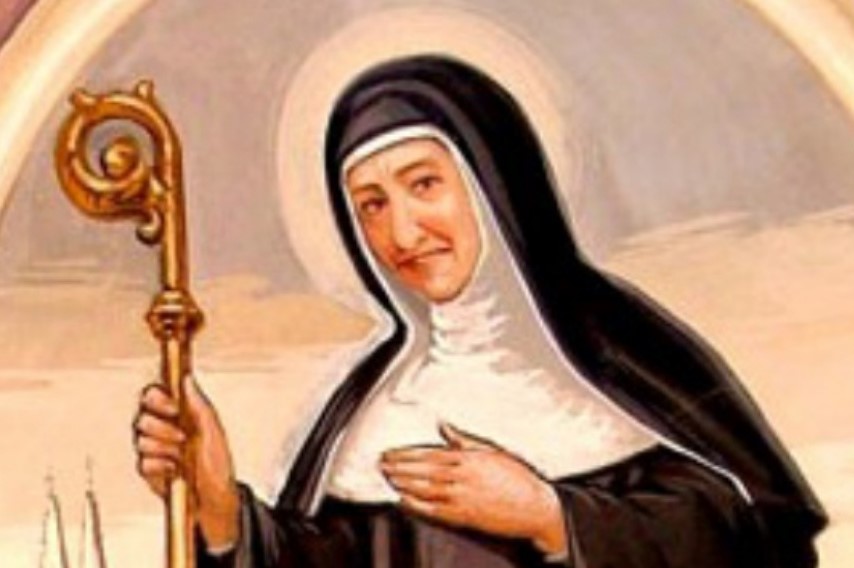
Saint Of The Day For November 19: Saint Matilda, Virgin
Matilda of Hackeborn, was a nun in the abbey of Helfta, her mystical experience was collected in the Liber Gratiae specialis.
She is known to have engaged in repeated dialogues with the Virgin Mary who revealed to her the pious devotional practice of the Three Hail Marys and the associated gifts.
Matilda’s Story
She was born between 1240 and 1241 in the castle of Helfta near Eisleben in Saxony.
She belonged to one of the most noble and powerful families in Thuringia.
When she was seven years old, she went with her mother to visit her sister Gertrude, then abbess of the Benedictine monastery of Rodersdorf in Switzerland.
She fell so much in love with the cloister that her parents agreed to her request to remain there as an educator.
Her vocation grew and the young woman decided to become a nun.
The Monastery of Helfta
In 1258 the monastery was transferred to Helfta in Germany.
Here Matilda distinguished herself for piety, humility and fervour.
She spent her time between prayer, reading and manual labour.
She was a teacher of the schoolgirls and spiritual advisor to the nuns, as well as a teacher of music and singing.
In 1261, a five-year-old girl named Gertrude, probably an orphan, arrived in Helfta.
The young girl, entrusted to Matilda’s care, soon revealed herself to be of charismatic personality and profound intelligence and will remain in history under the name of Saint Gertrude the Great or of Helfta.
To her, Matilda confessed her own mystical visions.
From these confidences was born one of the best known books of medieval mysticism: the Book of Special Grace.
In 1271, the elderly beghina Matilda of Magdeburg was also received into the community of Helfta, where she spent the final years of her life in serenity, far from slander and persecution.
In the last decades of the 13th century, there was a special atmosphere in the monastery of Helfta, due to the presence of exceptional nuns, authors of mystical works of the highest profile.
In addition to Matilda of Hackeborn, Gertrude of Helfta – to whom two works are attributed: Legatus divinae pietatis (‘The Messenger of Divine Mercy’) and Exercitia Spiritualia Septem (‘Spiritual Exercises’) – and finally Matilda of Magdeburg, author of Das fließende Licht der Gottheit (‘The Flowing Light of Divinity’).
Their literary work is the result of a communal and collaborative effort, so much so that the term ‘Helfta Style’ has even been used to refer to it.
These texts constitute the largest unified body of mystical writings by female authors of the 13th century.
Their authors show that they feed on the same spiritual climate: reference to Holy Scripture, the patristic tradition, Cistercian authors; centrality of the Eucharist; development of nuptial mysticism and devotion to the heart of Jesus.
St. Matilda: Death
Towards the end of her life, she asked Our Lady for help, to help her at the moment of her death, when the soul leaves the body.
Our Lady answered her plea, asking her in return to recite the “Three Hail Marys” daily, in order to honour the Trinity.
Matilda died in Helfta on 19 November 1298.
Read Also:
Saint Of The Day For November 17: Saint Elizabeth Of Hungary
Saint Of The Day For November 16: Saint Margaret Of Scotland
Saint Of The Day For November 15: Saint Albert The Great
COP27, African Bishops Call For Climate Reparations For Vulnerable Communities
The Future Of The Missions: A Conference For The 4th Centenary Of Propaganda Fide
Ghana, Bishops’ Conference Supports Bill To Abolish Death Penalty
